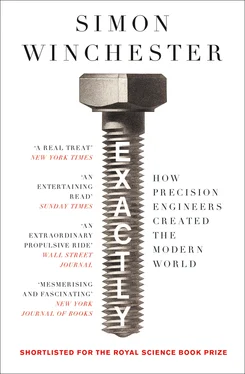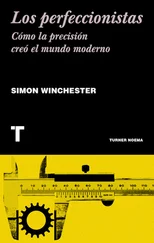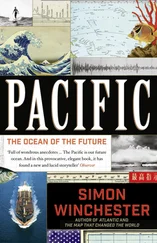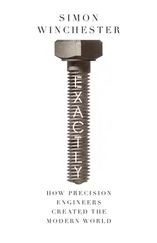After a full day of searing heat and grinding din, the cylinder was cut. The tool, hot but barely blunted, was withdrawn. The hole, three feet in diameter, looked smooth and clean, straight and true. Using a set of chains and blocks, he placed the heavy cylinder (now rather less heavy, as so much iron had been bored away) upward, on its end. The piston, fractionally less than three feet in diameter itself and smeared with lubricating grease, was carefully lifted up and over the lip of the cylinder and down into its depths.
There was, I like to think, a round of cheers, for the piston slipped noiselessly and snugly into the cylinder and could be lifted up and down with ease and without any apparent leakage of air, of grease, of anything. It then took Watt just a few days, once the disassembled pieces were brought back to his works in Soho, to mount the cylinder in pride of place in what would now be his, and the world’s, first working full-scale single-action engine. He and his engineers then added all the supplementary parts (the pipes, the second condenser, the boiler, the rocking arm, the governor, the water tank, the flywheel) and then loaded the firebox with coal, added a primer, lit the fire, and, once the water was hot enough to set steam pouring from the safety line, opened the main valve.
With an enormous chuff-chuff-chuff, the piston began to move up and down, up and down, out of the newly machined cylinder. The rocking beam above then began to oscillate up and back; the connecting rod on the far side started to move up and down, up and down; the set of eccentric sun-and-moon gears on the flywheel started to move; and then the huge wheel itself, tons of solid iron that would in effect store the engine’s power, started to turn.
Within moments, with the governor’s shiny couplet of balls spinning merrily to keep matters in check, the engine was roaring along at full power, thumping and thudding and whirring and chuffing—and now all perfectly visibly because, for the first time since Watt had begun his experiments, there was no leaking steam . The engine was working at maximum efficiency: it was fast, it was powerful, and it was doing just what was demanded of it. Watt beamed with delight. Wilkinson had solved his problem, and the Industrial Revolution—we can say now what those two never imagined—could now formally begin.
And so came the number, the crucial number, the figure that is central to this story, that which appears at the head of this chapter and which will be refined in its exactitude in all the remaining parts of this story. This is the figure of 0.1—one-tenth of an inch. For, as James Watt later put it, “Mr. Wilkinson has bored us several cylinders almost without error, that of 50 inch diameter … does not err the thickness of an old shilling at any part.” An old English shilling had a thickness of a tenth of an inch. This was the tolerance to which John Wilkinson had ground out his first cylinder.
He might in fact have done even better than that. In another letter, written rather later—by which time Wilkinson had bored no fewer than five hundred cylinders for Watt’s engines, which were being snapped up by factories and mills and mines all over the country and beyond—the Scotsman boasted that Wilkinson had “improved the art of boring cylinders so that I promise upon a seventy two inch cylinder being not farther distant from absolute truth than the thickness of an old sixpence at the worst part.” An old English sixpence was even slighter: half of a tenth of an inch, or 0.05 inches.
Yet this is a quibble. Whether the thickness of a shilling coin or the thinness of an old sixpence, it does not really matter. The fact is that a whole new world was being created. Machines had now been made that would make other machines, and make them with accuracy, with precision. All of a sudden, there was an interest in tolerance, in the clearance by which one part was made to fit with or into another. This was something quite new, and it begins, essentially, with the delivery of that first machine on May 4, 1776. The central functioning part of the steam engine was possessed of a mechanical tolerance never before either imagined or achieved, a tolerance of 0.1 inches, and maybe even better.
ON THE FAR side of the Atlantic Ocean, and precisely two months after the culmination of these events, on July 4, 1776, a whole new political world was to be created. The United States of America was born, with implications unimagined by all.
It was very shortly thereafter that the new nation’s principal representative in Europe, Thomas Jefferson, heard tell of these miraculous mechanical advances and started to ponder how his own faraway country might well take advantage of developments that appeared to him to have the very greatest potential.
Maybe, Jefferson declared, they could form the basis for a new trade well suited to his new country. Maybe, replied the engineers in response, we can do better than we have done already, and using their own arcane language of numbers, they translated their ambitions: maybe we can make and machine and manufacture metal pieces in America to a tolerance much greater than John Wilkinson’s 0.1. Maybe we can be adroit enough to reach down to 0.01. Maybe better than that—maybe to 0.001. Who could possibly know? As with the new nation, these visionary engineers wondered, so perhaps with the new machines.
As it happened, the engineers—in England, mainly, but also, and most significantly for the next part of the story, in France—would do a great deal better than they ever supposed. The genie of accuracy was now out of the bottle. True precision was now out of the gate, and moving fast.
Chapter 2
(TOLERANCE: 0.0001)
Extremely Flat and Incredibly Close
It is to the exactitude and accuracy of our machine tools that our machinery of the present time owes its smoothness of motion and certainty of action.
—SIR WILLIAM FAIRBAIRN, BT. (1862), REPORT OF THE BRITISH ASSOCIATION FOR THE ADVANCEMENT OF SCIENCE
On the north side of London’s Piccadilly, overlooking Green Park and sandwiched between the quarters of the aged and imperturbable Cavalry Club to the west and a rather more ephemeral Peruvian-style ceviche restaurant on its eastern side, stands Number 124, these days an elegant but somewhat anonymous structure providing offices for the discreet and service apartments for the wealthy.
Since 1784, when this far-western end of the great boulevard was still ripe for development, the address had been the home and atelier of a cabinet, engine, and lock maker named Joseph Bramah. On fair-weather days some six years after its opening, when Bramah and Company was an established and familiar small firm, modest gatherings of curious passersby would assemble outside to peer into the front bow window, puzzling at a challenge so difficult that it went unanswered for more than the sixty subsequent years.
There was just a single object on view in the window, placed on a velvet cushion like a religious icon. It was a padlock, oval shaped, of modest size, and with a smooth and uncomplicated external appearance. On its face was written, in a small script legible only to those who pressed their faces close to the window glass, the following words: THE ARTIST WHO CAN MAKE AN INSTRUMENT THAT WILL PICK OR OPEN THIS LOCK SHALL RECEIVE 200 GUINEAS THE MOMENT IT IS PRODUCED.
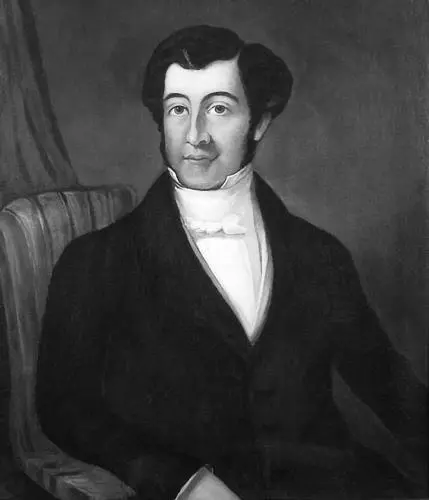
Joseph Bramah, locksmith extraordinaire, also invented the fountain pen, a device for keeping beer cool and under pressure in a pub basement, and a machine for counting banknotes.
The designer of this boastfully unbreakable lock was the firm’s principal, Joseph Bramah. Its maker, however, was not Bramah but a then-nineteen-year-old former blacksmith’s apprentice named Henry Maudslay, whom Bramah had taken on the previous year, entirely because of Maudslay’s reputation for having a formidable skill in delicate machining.
Читать дальше
